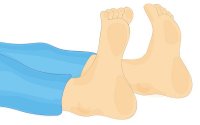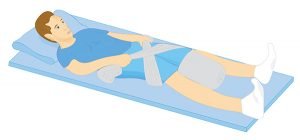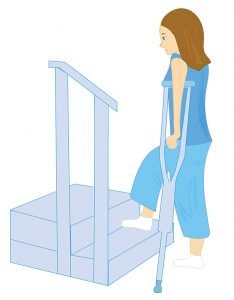AFTER HIP SURGERY
Continued treatment after hip surgery
One of the risks after hip replacement surgery is the formation of blood clots
and thrombosis in the veins of the legs and lungs. These situations can be
prevented by performing appropriate exercises, which contribute to improving
blood flow in the body. Follow your doctor's instructions, continue to do these
exercises and attend check-ups after surgery to get an accurate assessment
of your condition and to maintain your health.
Strengthening exercises after hip replacement surgery
Strengthening exercises after hip replacement are very important for
rehabilitation and make it possible to perform routine daily activities such as
walking, climbing and climbing stairs in order to improve the range of motion
in the joint and strengthen the muscles of the hip and pelvis. Here are some
general recommendations, to repeat each exercise according to the
instruction attached to it or until you begin to feel muscle fatigue. Remember
that as the muscle gets stronger, you can increase the number of repetitions;
it is advisable that you start with ten repetitions.
Physiotherapy exercises appropriate from 1 to 3 days post-surgery:
General guidance: It is recommended to practice each exercise twice a day
for about 15 minutes.
Exercise 1: Moving the feet and ankles to improve blood flow
- Position: Lying on your back or sitting in bed, while keeping your legs straight, move your ankles back and forth as far as possible.
- Frequency: it is advisable that this exercise is performed every 20 minutes during all waking hours.
- Emphases: When the knees are straight, feel the stretch of the calf and hamstring muscles.


Exercise 2: Passive contraction of the quadriceps.
- Position: Lying in bed on your back with your toes pointing to the ceiling.
- Emphases: Contract the quadriceps by pushing the back of the knee towards the bed and static hold this position for five seconds. Perform ten repetitions.
- Aids: The exercise can also be performed with a rolled sheet under the knee.


Exercise 3: strengthening the gluteus muscles.
- Position: lying in bed on your back or sitting upright in a chair.
- Action: Contract the gluteus muscles and hold them tight for five seconds.
- Repetition: 10 times.

Exercise 4: Isometric strengthening of abductor muscles (for beginners):
- Position: Lying in bed with feet in front of you.
- Aids: Roll a towel between your knees and wrap a sheet around your hips.
- Emphases: Push the legs to the side against the resistance of the sheet.

Exercises to be performed after hip surgery from the third day onwards:
Perform the initial four exercises and continue to perform these four exercises as described in this guide, especially if you are recovering from hip replacement surgery. This way you can avoid various complications, as well as strengthen and rehabilitate the area.
Exercise 5: strengthening the abductor muscles (advanced).
- Position: Standing with straight knees, while gripping the backrest of a chair or facing a wall.
- Emphases: Swing the foot to the side as far as possible.

Exercise 6: Getting up from sitting position to a standing one.
- Position: Sitting in a chair with handles.
- Emphases: keep your knees bent when your feet are fully on the floor.
- Repetition: 10 times.

Exercise 7: going up and down a step
- Position: Stand at the bottom of a step and hold on to the railing.
- Emphases: Step up with your bent leg and go back down.
- Repetition: Repeat the process 10 times.


Exercise 8: Standing on one leg with support.
- Position: Standing on one leg and gripping the backrest of the chair or facing a wall.

After exercising
Pain and swelling symptoms may appear after exercise and can be alleviated by two actions:
- Place your leg on two pillows (place the pillow under the calf and ankle; avoid placing it under the thigh).
- Cool the knee with ice, and wrap it in a towel for ten minutes every two hours throughout the day.
Illustrations by Limor Shaked
Sunnybrook's Holland Orthopaedic & Arthritic Centre and Mount Sinai Hospital has developed part of this material and this has been edited by Dr. Michael Drexler. Permission to add this link to my website has been granted by Sunnybrook Health Sciences Centre’s and Mount Sinai Hospital Guides for Patients Having Hip or Knee Replacement.


